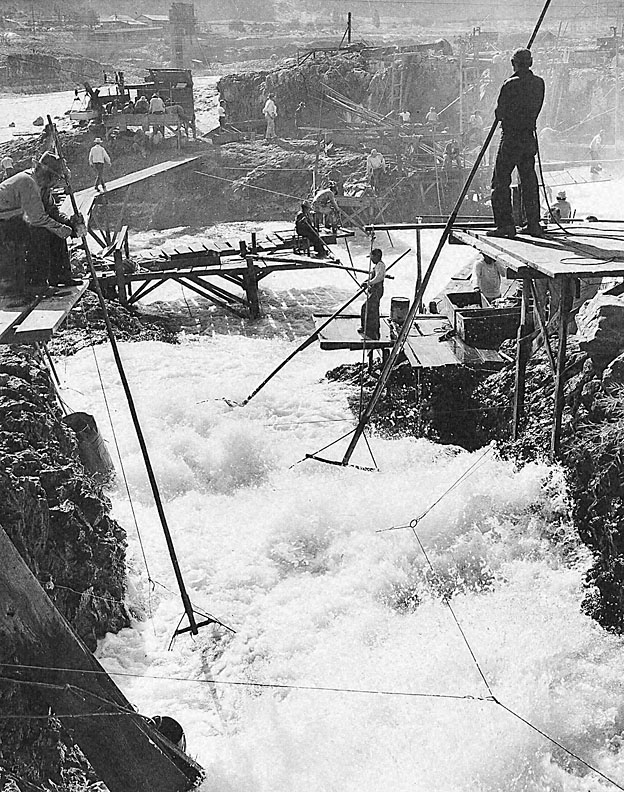- Catalog No. —
- CN 007237
- Date —
- 1954
- Era —
- 1950-1980 (New Economy, Civil Rights, and Environmentalism)
- Themes —
- Environment and Natural Resources, Folklife, Native Americans
- Credits —
- Oregon Historical Society
- Regions —
- Columbia River
- Author —
- Herb Alden Photograph
Indians Fish at Celilo Falls
Celilo Falls was an important center for native trade, culture, and ceremony. For at least 11,000 years, tribes throughout the region, and from as far away as the Great Plains, came to Celilo Falls to trade and celebrate the annual fall and spring returns of salmon. In the early 1800s, fur trader Alexander Ross called Celilo “the great emporium or mart of the Columbia.” Indians continued to fish at Celilo Falls with dip nets until 1957, when The Dalles Dam flooded and inundated the falls. The federal government relocated Celilo Village, an area near the falls where people lived and traded, to avoid the rising waters, and compensated local Indian people and tribes with more than $26 million dollars for their cultural and economic loss. Indian leaders protested the building of the dam, and many said that no amount of money would be sufficient replacement for Celilo Falls. Descendants of the Native families who fished at Celilo continue to fish on the river and to perform the traditional salmon ceremonies of their ancestors.
Further Reading:
Aikens, C. Melvin. Archaeology of Oregon 3rd ed. Portland, Oreg., 1993.
Hunn, Eugune S. Nch’i-wána, “the big river:” Mid-Columbia Indians and their land. Seattle, Wash., 1990.
Written by Kathy Tucker, © Oregon Historical Society, 2002.
